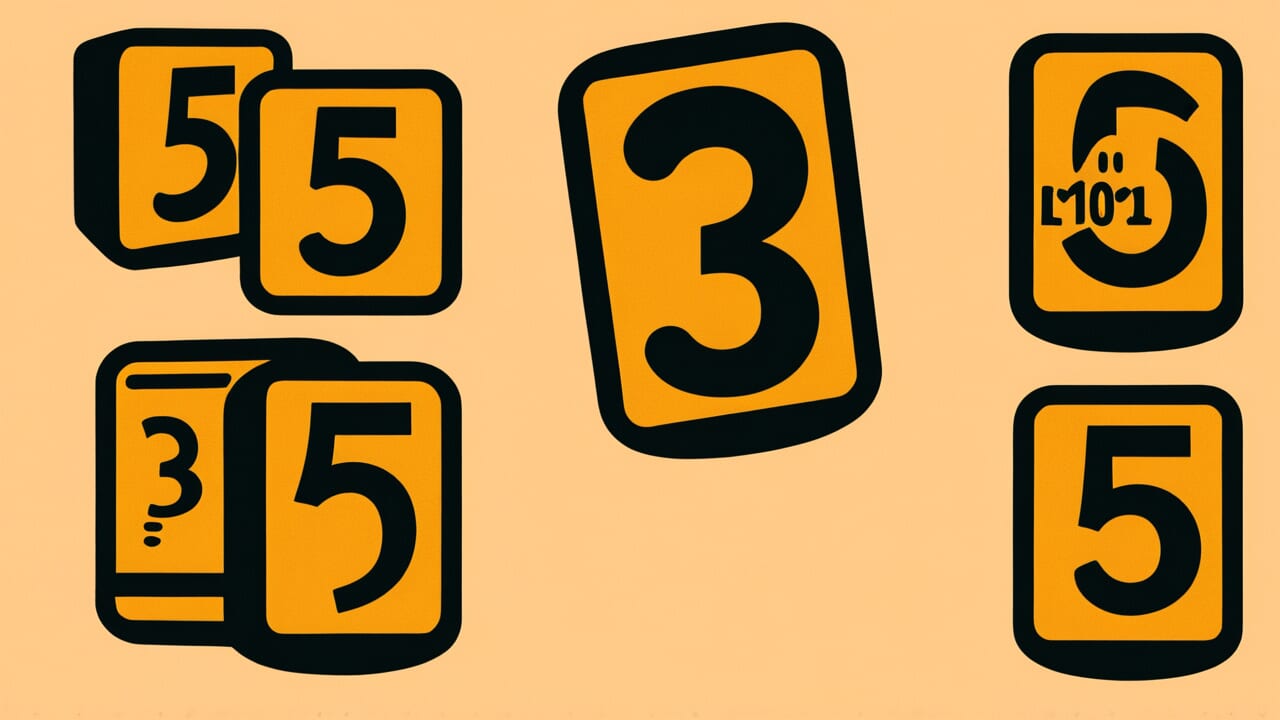How to Read “Three-five’s eighteen”
Sango no jūhachi
Meaning of “Three-five’s eighteen”
“Three-five’s eighteen” refers to mistakenly calculating 3×5 as 18 instead of 15. It means making errors in calculations or estimates.
This proverb isn’t just about math mistakes. It describes situations where people make fundamental errors in judgment when predicting or planning things.
This includes miscalculating business profits and losses, misjudging project outlooks, or making mistakes in staffing plans. The proverb warns against failing at basic tasks that should be foolproof.
People use this expression when someone makes an obvious calculation error or misjudgment. They might say, “That’s three-five’s eighteen.” You can also use it when reflecting on your own mistakes.
Even today, people often badly misjudge project budgets or get basic assumptions wrong. This proverb teaches a universal lesson.
No matter how complex your plan is, everything falls apart if your basic calculations and estimates are wrong.
Origin and Etymology
The exact origin of this proverb isn’t clear from historical texts. However, the structure of the phrase offers interesting insights.
“Three-five” means 3 and 5. Their product should obviously be 15. But the phrase says “eighteen.” Why did this simple math error become a proverb?
It likely emerged from merchant culture during the Edo period. Back then, abacus calculations were fundamental to business.
Getting 3×5 wrong meant a fatal mistake for a merchant. Mistaking 15 for 18 wasn’t just a small error. It was like adding 3 extra, a major blunder.
What’s interesting is the specific number “eighteen.” It’s not “13” or “14.” This might reflect an actual common mistake pattern. Or perhaps “eighteen” was chosen because it sounds good.
In business, calculation errors destroy trust. From this practical world, the expression spread as a warning against all kinds of miscalculations and misjudgments.
Because it uses concrete numbers, everyone could understand it easily. This made it memorable and helped it endure.
Usage Examples
- The budget estimate was three-five’s eighteen, so the project ended up deeply in the red
- His business plan was three-five’s eighteen from the start, so it was doomed to fail
Universal Wisdom
The proverb “Three-five’s eighteen” reveals a universal truth about human perception’s fragility.
We tend to overestimate our judgment. We especially assume we can’t mess up basic things. We think, “There’s no way I’d get this wrong.”
But in reality, we’re most careless with the simplest calculations and estimates. Because anyone can solve 3×5, we skip checking it. Then we end up with 18, a wildly wrong answer.
This reveals something essential about human psychology.
This proverb has endured because our ancestors learned from experience. Most failures don’t come from complex problems. They come from overlooking basic elements.
People become careful when tasks require advanced skills or deep knowledge. But with things that seem “obvious,” our attention wanders.
Looking deeper, this proverb also warns against human arrogance. The attitude of “this is so simple” leads to serious mistakes.
It shows how dangerous it is to lose humility and neglect fundamentals.
No matter how much experience you gain or knowledge you acquire, never forget to value basics. This unchanging truth is what the proverb conveys through clear, simple numbers.
When AI Hears This
Human working memory can only hold 3 to 5 pieces of information simultaneously. This limitation has a fascinating impact on learning multiplication tables.
Why do people rarely mistake “two times two is four” or “nine times nine is eighty-one,” but confuse “three times five is fifteen” with “three times five is eighteen”?
The answer lies in memory structure. Edge multiplication facts are easier to remember as “chunks.” The brain stores “two-two-four” as a single sound unit.
However, middle-range facts like “three-five,” “three-eight,” “four-six,” and “six-eight” cluster together with similar numbers. Multiple chunks interfere with each other.
Let’s look at a specific example. When recalling the three times table, the brain tries to process multiple pieces of information at once.
It goes: “three-three-nine, three-four-twelve, three-five-?, three-six-eighteen, three-seven-twenty-one, three-eight-?” This exceeds working memory capacity. The nearby number “eighteen” slips in by mistake.
Even more interesting is the pattern in these errors. When people mistake “three-five,” they never say “thirteen” or “twenty.”
They always confuse it with answers from nearby multiplication facts like “eighteen” or “twelve.” These are numbers adjacent in working memory.
This proves the brain stores information as a spatial network.
Lessons for Today
“Three-five’s eighteen” teaches modern people the importance of valuing basics.
We face complex decisions every day. At work and in relationships, we often encounter difficult problems. When this happens, we tend to seek only sophisticated solutions or innovative ideas.
But what really matters is firmly grasping the fundamentals.
Modern society values speed. Quick decisions and swift actions are demanded. In this rush, taking time to check “obvious” things might seem wasteful.
But when you neglect that “obvious” step, irreversible failures happen.
This proverb gives you the courage to pause. When you’re rushing, return to basics. When you’re confident, check again.
This humble attitude ultimately becomes the most reliable and fastest path to success.
No one is perfect. Everyone has the potential to make “three-five’s eighteen” mistakes. That’s exactly why developing habits of valuing basics and never skipping checks becomes the shield that protects your life.



Comments